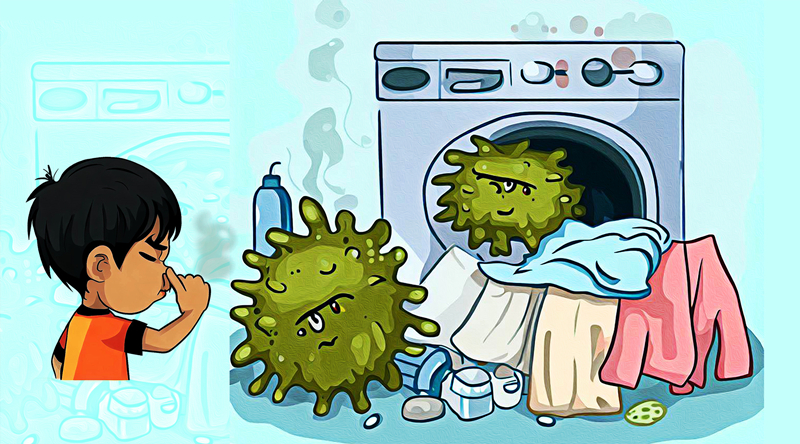Although antibacterial detergents have been demonstrated to reduce malodor in textiles, their impact on microbial diversity during the laundry process and the subsequent effect on malodor in textiles have yet to be fully examined. Researchers from the Qingdao Institute of Bioenergy and Bioprocess Technology (QIBEBT) of the Chinese Academy of Sciences (CAS) and Procter & Gamble have provided evidence to address this in a recent study.
The results were published on June 5 in iMeta.

Effect of the laundry process on used-towel microbiomes at species-level and malodor control. (Image by TzeHau Lam, LIU Yang)
"We have shed light on the impact of antibacterial detergents on microbial exchange during the laundry process and their subsequent effect on malodor in textiles", said first author TzeHau Lam, senior scientist at Procter & Gamble Singapore Innovation Center.
Researchers used a novel metagenomic sequencing method, 2bRAD-M, to examine the impact of antimicrobial detergents on microbial diversity and odorant production in naturally-soiled cotton towels.
The study involved 124 cotton swatches treated with a standard non-antibacterial detergent or an antibacterial detergent at pre-wash, post-wash, and after-indoor dry-washed conditions across three independent wash batches. The researchers also measured the microbial load and abundance of malodorous dimethyl disulfide in the towels.
"Microbiome homogenization was observed in post-wash and after indoor dry swatches," said Lam, "Use of antibacterial detergent reduced microbial homogenization and decreased microbial load and odor-generating bacteria in towels after wash."
Dimethyl disulfide is a foul-smelling compound often found in used textiles. Of the evidence demonstrating odor production in textiles, less dimethyl disulfide production and improved sensory outcomes were observed in post-wash and indoor dried towels with the antibacterial detergent.
This study highlights the significant impact of antibacterial detergents on microbial exchange during the laundry process and subsequent effects on malodor in used towels. It suggests that antibacterial detergents reduce malodor in textiles by reducing the microbial load and the abundance of odor-generating bacteria.
"It is important to note that the metagenome-sequencing approach in this study does not distinguish between live and dead microbial cells", emphasized by the co-corresponding author XU Jian, head of Single-Cell Center at the QIBEBT, CAS, "One future direction would be to employ single-cell metabolic phenome approaches such as the Ramanome platform to drive deeper insights on microbial exchange between textiles in-wash, includingin situmicrobial metabolic profiling, establishing links betweenin situmetabolic phenome and genome at single-cell resolution, and isolating individual cells with targeted metabolic phenome approaches."
"Our findings may guide development of laundry detergents with greater efficacy to address consumer concerns on textile malodors, and may also have implications for other applications where microbial transmission is a concern," added co-corresponding author LIU Jiquan, director and principal scientist at Procter & Gamble Singapore Innovation Center.